FOUR FILMS ABOUT ANNE FRANK
SUBJECTS — World/WWII & Holland; Biography;
SOCIAL-EMOTIONAL LEARNING — Coming of Age; Families in Crisis; Human Rights; Courage;
MORAL-ETHICAL EMPHASIS — Respect; Responsibility; Citizenship.
There is NO AI content on this website. All content on TeachWithMovies.org has been written by human beings.
SUBJECTS — World/WWII & Holland; Biography;
SOCIAL-EMOTIONAL LEARNING — Coming of Age; Families in Crisis; Human Rights; Courage;
MORAL-ETHICAL EMPHASIS — Respect; Responsibility; Citizenship.
Nothing can substitute for reading the book, Anne Frank: The Diary of a Young Girl. Not only does it intimately acquaint adolescents with the Holocaust but it also facilitates their own character development. Reading Anne’s thoughts about her family, career, adults, boys, her own sexuality, her dreams for the future, and the horror of events in the world outside, encourages adolescents to think about those issues in their own lives.
Each of these films, two documentaries, and two dramatizations, are excellent. They will supplement and confirm the lessons derived from reading Anne Frank’s diary. A fifth film, Anne B. Real, will be extremely useful in motivating children to read the book. “Anne B. Real” is a fictional account of a modern-day black Hispanic girl from the slums of New York who takes inspiration from the Diary. It helps her to face a host of calamities and find the courage to pursue her dream. “Anne B. Real” is valuable when seen at any time, before, during, or after children have read the Diary.
This Learning Guide relates to the book, Anne Frank: The Diary of a Young Girl, and to each of the four films. See also our separate Learning Guide to Anne B. Real.
Age: 12+; No MPAA Rating; Drama; 1959, 171 minutes; B & W.
This is the classic Academy award-winning movie version of the play based on the diary.
Age: 14+; No MPAA Rating; Drama made for television; 2001 120 minutes; Color.
This drama describes the entire life of Anne Frank, from before the family goes into hiding through Anne’s death at the Bergen-Belsen concentration camp. It won an Emmy in 2001 for Best Miniseries.
Age: 12+; MPAA Rating — PG for emotional thematic elements and depictions of the Holocaust; Documentary made for television; 1995, 122 minutes; Color.
Winner of the 1995 Academy Award for Best Documentary, this film contains actual footage briefly showing Anne Frank from the balcony of her apartment, the meeting between the son of Dr. Pfeffer (the dentist who shared a room with Anne) and Miep Gies, and much more.
Age: 12+; No MPAA Rating; Documentary made for television; 1998, 50 minutes; Color.
This is an excellent documentary of Anne’s life and times, featuring interviews with her father, Miep Gies, and several of Anne’s friends. At 50 minutes, it can be conveniently shown in one class session.
TWM offers the following movie worksheets to keep students’ minds on the film and to focus their attention on the lessons to be learned from the movie.
Film Study Worksheet for a Work of Historical Fiction;
Film Study Worksheet for ELA Classes; and
Worksheet for Cinematic and Theatrical Elements and Their Effects.
Film Study Worksheet for a Documentary (for Anne Frank: The Life of a Young Girl).
Teachers can modify the movie worksheets to fit the needs of each class. See also TWM’s Historical Fiction in Film Cross-Curricular Homework Project and Movies as Literature Homework Project.
Additional ideas for lesson plans for this movie can be found at TWM’s guide to Lesson Plans Using Film Adaptations of Novels, Short Stories or Plays.
THE DIARY OF ANNE FRANK
Selected Awards: 1959 Academy Awards: Best Art Direction/Set Direction (B&W), Best Black & White Cinematography, Best Supporting Actress (Winters); 1960 Golden Globe Awards: Best Film Promoting International Understanding; 1959 Academy Award Nominations: Best Costume Design (B&W), Best Director (Stephens), Best Picture, Best Supporting Actor (Wynn), Best Original Score.
Featured Actors: Millie Perkins, Joseph Schildkraut, Shelly Winters, Richard Beymer, Gusti Huber.
Director: George Stephens.
ANNE FRANK, THE WHOLE STORY
Selected Awards: 2001 Emmy Awards: Outstanding Miniseries, Outstanding Art Direction/Set Direction; 2002 Golden Globe Awards: Best Miniseries, Best Performance by an actor (Kingsly), Best Performance by an actress (Gordon); 2001 Emmy Awards Nominations: Outstanding Casting, Cinematography, Direction, Lead Actor (Kingsly), Lead Actress (Gordon), Supporting Actress (Blethyn); Sound Editing, Writing,
Featured Actors: Ben Kingsley as Otto Frank, Hannah Taylor Gordon as Anne Frank, Tatjana Blacher as Edith Frank, Brenda Blethyn as Auguste van Pels, Joachim Król as Hermann van Pels, Jessica Manley as Margot Frank, Nick Audsley as Peter van Pels, Jan Niklas as Fritz Pfeffer, Lili Taylor as Miep Gies, and Peter Bolhuis as Victor Kugler.
Director: Robert Dornhelm.
ANNE FRANK REMEMBERED
Selected Awards: 1996 Academy Awards: Best Documentary.
Featured Actors: Kenneth Branagh, Narration (voice); Glenn Close, Diary Readings (voice); Anne Frank in archival footage; Otto Frank, interviewed; and Miep Gies, interviewed.
Director: Jon Blair.
ANNE FRANK, THE LIFE OF A YOUNG GIRL
Selected Awards: None.
Featured Actors: Jack Smith, Narrator, Nathalie Paulding read the diary portions.
Producer: Brooke Runette.
Each film will supplement and confirm the benefits of reading the book, Anne Frank: the Diary of a Young Girl.
Except for “The Diary of Anne Frank,” the films contain disturbing photographs of people who were imprisoned or died in the concentration camps, mass graves, etc. Unfortunately, in a world which suffered through the 20th century, such images should be shown to all children at one point or another. “Anne Frank, the Whole Story” also contains dramatic recreations of scenes of women being stripped of their clothing while being processed at Auschwitz and camp inmates suffering from illness, starvation, exposure etc. There is one scene of full frontal nudity of the actress playing Anne’s mother. These are, as they should be, deeply upsetting. We suggest this film only for ages fourteen and older.
If your child is reading Anne Frank: The Diary of a Young Girl, studying the Holocaust or learning about WWII, watch any of these films as a family. Tell your kids that there are two reasons the Diary is so popular. First, the story of Anne Frank tugs at our heartstrings. Second, the Diary is an excellent description of a young person struggling with many of the issues of adolescence. Anne’s wise approach to growing up is still valid today. Ask and answer the Quick Discussion Question in the sidebar or any of the other Discussion Questions.
Families can also watch “Anne Frank: the Whole Story” at any time.
The Holocaust has been defined as “the state-sponsored, systematic persecution and annihilation of European Jewry by Nazi Germany and its collaborators between 1933 and 1945. Jews were the primary victims — 6 million were murdered. Gypsies, the disabled, and Poles were also targeted for destruction or decimation for racial, ethnic, or nationalist reasons. Millions more, including homosexuals, Jehovah’s Witnesses, Soviet prisoners of war, and political opponents of the Nazi regime also suffered grievous oppression and death under Nazi tyranny.” See Guidelines for Teaching About the Holocaust from the United States Holocaust Memorial Museum, page 3, as it existed on the Internet on October 3, 2006.
More than a million children under the age of 16 were murdered by the Nazis in the Holocaust. In Holland, some 25,000 Jews hid from the Germans, refusing to meekly go to the concentration camps. Approximately 20,000 Dutch people risked their lives to protect the hidden Jews. Tens of thousands of other Dutch people must have known about hidden Jews but kept the secret from the authorities. During the course of the war, 11,000 of the hidden Dutch Jews were discovered and deported to the death camps.
Anne Frank (1929-1945) lived in hiding in Amsterdam with her family for 25 months from 1942-1944. Heroic Dutch sympathizers brought them food and other necessities. Shortly before the end of the war, the family’s hiding place was betrayed and its occupants shipped to concentration camps. Anne contracted typhus at Bergen-Belsen and died there in March of 1945. The camp was liberated a few weeks later. Anne’s father, Otto Frank, was the only resident of the “Secret Annex” to survive the Holocaust. Miep Gies, one of the Franks’ Dutch protectors, found the diary in the ruins of the Franks’ hiding place after the Nazis had searched it. When she heard that Anne had died, Mrs. Gies gave the diary to Mr. Frank. It was published in 1947.
The business associates and former employees of Mr. Frank who protected the occupants of the Annex and brought them food were Victor Kugler, Johannes Klieman, Miep Gies and Bep Voskuijl. Jan Gies, Miep’s husband, also helped the Franks. These people had nothing to gain and everything to lose for their actions. They, like 20,000 other Dutch people who helped hide Jews from the Nazis, are true heroes. When the Franks were betrayed, Kugler and Klieman were imprisoned for their role in helping the Jews. Miep Gies, who was born in Vienna and married to a Dutchman, noticed that the Nazi in charge of the arrest spoke German with a Viennese accent. She successfully appealed to their commonplace of birth to avoid arrest and later, unsuccessfully, tried to bribe the Nazi to let the Franks and their friends go.
The Nazis and their Dutch collaborators were able to deport hundreds of thousands of Jews from Holland during WWII, and while no one would deny that more should have been done to oppose them, the Dutch did protest the removal of Jews from their country. In February 1941, when the Nazis started taking Jews to the concentration camps, the Dutch workers conducted the most widespread general strike that Holland had ever experienced. Throughout the country, hundreds of thousands of people stopped work. When the Nazis required Jews to wear a yellow six-pointed star on their outer clothing, many Dutch people made it a point to be friendly with Jews, while others wore yellow stars on their own clothing. Some of these people were sent to concentration camps for six weeks for this offense. See Anne Frank, the Biography by Melissa Müler, pages 118, 119, 136 & 137. Eventually, the Nazis with their brutal tactics intimidated most Dutch people into silence and inaction.
Countries occupied by Nazi Germany during World War II had different reactions to the German persecution of Jews. In Eastern Europe – for example, in Lithuania, Latvia, and Hungary – the local populations killed Jews themselves or helped the Germans to identify Jews and ship them off to concentrations camps. Other countries, such as France, had a divided reaction with most people doing nothing, some people protecting Jews, and many others helping the Germans to hunt them down and take them away. In Denmark, when the German occupiers ordered Jews to wear a yellow Star of David on their outer clothing, the Danish king wore one as well. Most Danish Jews were helped to safety in Sweden, which was neutral during WWII. The few Jews who remained in Denmark were hidden from the Nazis and survived the war. For more on the courageous actions of Danes and one German diplomat to save the Jews of Denmark, see the Learning Guide to “A Force More Powerful.”
In an interview with Scholastic, Miep Gies said, “My decision to help Otto [Frank] was because I saw no alternative. I could foresee many sleepless nights and an unhappy life if I refused. And that was not the kind of failure I wanted for myself. Permanent remorse about failing to do your human duty, in my opinion, can be worse than losing your life.”
When asked “What message should the young people of today pass on about Anne’s story?” she responded:
The message to take from Anne’s story is to stop prejudice and discrimination right at its beginning. Prejudice starts when we speak about THE Jews, THE Arabs, THE Asians, THE Mexicans, THE Blacks, THE Whites. This leads to the feeling that all members of each such group think and act the same. That results in prejudice. Lumping entire groups of people together is RACISM, because it denies the fact that everyone is an individual. Even our own brothers and sisters or parents are not exactly like we are. So how do we dare to lump entire groups of people together? If any German had ever asked Anne to tell something about herself, I think she would be still with us today. However, nobody asked: she was just a Jew! Therefore, never base your opinion about anybody else on the color of that person’s skin, or on the passport that a person carries, or on the family that person comes from, but only on what the person says and does and on NOTHING ELSE.” From Scholastic Student Interview with Miep Gies
For statements by world leaders Nelson Mandela, Vaclav Havel and John F. Kennedy about the continuing importance of Anne Frank: The Diary of a Young Girl, see Learning Guide to Anne B. Real.
This illustration is from a website for a company called Art Engineering and is presented with their permission. For a better view see cutaway view of The Secret Annex.

1. See Discussion Questions for Use With any Film that is a Work of Fiction.
2. Was the Holocaust inevitable?
3. In your opinion, what will it take for humankind to cure itself of the urge to destroy and wage war? Are we doomed to always repeat the cycle of violence? Justify your answer.
4. Anne Frank has been called the best-known victim of the Holocaust. Actually, she is probably the best-known victim of any holocaust, including the Turkish genocide of the Armenians, Stalin’s murder of tens of millions of Ukrainians, the Cambodian holocaust, the decimation of the Tutsis in Rwanda, and the ethnic cleansing in Bosnia and Kosovo, to name some of the more infamous. She was not a distinguished doctor, scientist, musician, clergyman or author, like many who perished in the camps. She was just a young girl with promise to be a good writer. The destruction of Anne Frank’s family is just as tragic, but no more tragic, than the millions of families that have been destroyed in the various holocausts. Take for example, the family in Rwanda in which a Hutu village leader was induced to murder his Tutsi wife and his sons in front of the entire village. Anne’s story is certainly not the most heroic. Her family hid from the Nazis. They offered no resistance. The Franks and the Van Daans were able to help only one other person, Dr. Pfeffer, while some others helped many. The Dutch people who sheltered the Franks and the Van Daans were real heroes. They could have done nothing and lived through the war without undergoing the tremendous risks that they undertook to help the inhabitants of the secret annex. Given these facts, why has Anne Frank’s story captured the imaginations of so many?
5. How does one hold onto his or her human dignity when faced with a holocaust?
6. Edmund Burke (1729-97) a British political philosopher whose writings strongly influenced the Founding Fathers of the United States said that “All that is necessary for the triumph of evil is that good men do nothing.” How does this apply to the Holocaust?
7. The Talmud is a set of commentaries on religion and life by Jewish religious scholars. It has the force of law for religious Jews. The Talmud states that “To save one life is as if you have saved the world.” How does this apply to our reaction to Anne Frank’s tragic story?
8. Were 6,000,000 Jews the only people killed in the Holocaust?
9. In the diary entry for June 20, 1942, first entry for the day, Anne referred to the diary as a fictional friend named Kitty. Why did she do this?
10. In her diary entry for December 24, 1943, Anne describes things that she misses like the smell of wind on the clothes of people who come in from the outside, breathing fresh air, riding a bike, dancing, whistling, and looking at the world. Can you think of some other things that you would miss if you were confined to a few rooms for 25 months?
11. In the diary entry for January 12, 1944, Anne talks about having a “craze” for dancing. What, as exemplified by this passage, must one do when confined in a few rooms for months on end?
12. In her diary entry for March 7, 1944, Anne talks about happiness and courage. What is Anne doing in this passage? Do you agree with her?
13. In the diary entry for March 7, 1944 Anne thinks about how completely different her life was in 1942 before she and her family took up residence in the Secret Annex. Read what she says and describe whether you have ever had a similar feeling about a period in your life.
14. In the diary entry for March 16, 1944, Anne complains about having to share her room. She says that only in the attic and with her diary can she be herself “…for a while just a little while.” Why is a place where a person can relax and just be themselves important? Do you have a place like this? If you do, describe how that place makes you feel.
15. In the diary entry for April 4, 1944: “I want to go on living after my death!” Will the memory of Anne fade as time goes on? What factors will keep it alive and what will tend to make it fade away?
16. In the diary entry for May 3, 1944 (pp. 200-202), Anne states that, “There’s in people simply an urge to destroy…” Do you agree or disagree? Justify your answer and tell us where this urge comes from and how it can be restrained or replaced with a desire to nurture.
17. Play for the class the song “The Universal Soldier” performed by Donovan, Buffy St. Marie, and others or read it to them as a poem. Then read them Anne’s diary entry for May 3, 1944, when she talks about the common man being responsible for war. What do you think about these sentiments? Do you agree or disagree? Is it an impossible dream for the common soldiers to stand up as one man, on both sides of the political or national divides, and say “Never again. We won’t fight”?
18. In the diary entry for July 15, 1944, Anne talks about the world becoming a wilderness and feeling the suffering of millions. Do you agree that the world is becoming worse off or is it actually getting better?
19. In the diary entry for July 15, 1944, Anne says that she still believes that people are good. Is Anne being inconsistent in her beliefs about the inherent goodness of people? See entry for May 3, 1944.
20. What were some of the problems that the inhabitants of the “secret annex” faced during their time in hiding?
21. At Bergen-Belsen, Anne’s mother and her sister Margot were offered the opportunity to go to a labor camp where their chances of survival would have been much better. (In fact, almost all of the people who went to that labor camp survived.) Anne could not go because she was suffering from scabies. Edith Frank and Margot refused to leave Anne. As a result, all of them died. Did they do the right thing?
22. The Holocaust was the worst episode of prejudice against Jews. But Jews had been subjected to scapegoating, pogroms (riots by their neighbors in which Jews were killed and their property destroyed) and hatred in parts of Europe for centuries. What is the reason for the long history of anti-Semitism in Europe?
23. The diary of Anne Frank has been translated into dozens of different languages. It is read throughout the world. How can you account for this?
24. What do you think it would have been like to live cooped up for more than a year in a small attic with seven other people and one cat?
25. How much does Anne Frank have in common with today’s youth in America?
26. How did Anne grow and change over the year-and-a-half she was in the Secret Annex?
27. Why did Otto Frank relocate his family from Germany to Holland? What would have happened had he relocated his family a hundred miles further to the west, in England?
28. Discuss how Otto Frank quietly prepared for the worst and made arrangements to ensure the safety of his family.
29. What incident finally prompted the Franks to go into hiding?
30. Describe three problems that the occupants of the Secret Annex had in living together in cramped quarters for more than two years.
31. Anne Frank revised her diary. What was the reason she did this?
32. Why did Miep Gies save Anne’s diary?
33. The Franks had moved to Holland to get away from the Nazis. Why did they do this?
For suggested answers: click here.
1. How did the Frank family deal with the crisis of the Holocaust?
2. Why are the Dutch protectors of the Franks heroic figures?
3. If the Frank’s Dutch protectors had not risked their lives to help their friends hide from the Nazis, would you have criticized them for not doing enough?
For suggested answers: click here.
Discussion Questions Relating to Ethical Issues will facilitate the use of this film to teach ethical principles and critical viewing. Additional questions are set out below.
The “Pillars of Character” stressed in these films are:
(Treat others with respect; follow the Golden Rule; Be tolerant of differences; Use good manners, not bad language; Be considerate of the feelings of others; Don’t threaten, hit or hurt anyone; Deal peacefully with anger, insults, and disagreements)
(Do what you are supposed to do; Persevere: keep on trying!; Always do your best; Use self-control; Be self-disciplined; Think before you act — consider the consequences; Be accountable for your choices)
(Do your share to make your school and community better; Cooperate; Stay informed; vote; Be a good neighbor; Obey laws and rules; Respect authority; Protect the environment)
1. Why did the Dutch protectors risk their lives to try to help the Franks and the others hidden in the attic? What would you have done in that situation?
2. During World War II, what were the different reactions of citizens of various countries to the Nazi persecution of the Jews?
3. What does this poem mean?
In Germany they first they came for the communists
and I did not speak up because I was not a communist
Then they came for the Jews
and I did not speak up because I was not a Jew
Then they came for the trade unionists
and I did not speak up because I was not a trade unionist
Then they came for the Catholics
and I did not speak up because I was a Protestant
Then they came for me —
and by that time there was no one left to speak up.
— Pastor Niemoeller (victim of the Nazis)
For suggested answers: click here.
1. Assignments, Projects, and Activities for Use With any Film that is a Work of Fiction;
2. Write a paper answering anyone or a group of the Discussion Questions set out above;
3. Give a class presentation, singly or in groups, responding to any of the Discussion Questions set out above;
4. The class or a group of students can perform the play And Then They Came for Me: Remembering the World of Anne Frank by James Still;
5. Search the Internet for articles on Anne Frank and select the three that are the most informative; print them out and bring them to class;
6. What would you have done if you had to live in hiding, and could not make a sound until 6:00 p.m. six days a week, and had no computer, video games, television, or way of playing music. Make up a daily schedule from one of your days showing what you would have done during each hour. [Compare Anne’s diary entries for August 4, 1943, through Monday, 9 August 1943 in which she described a typical day while in hiding. Ask students to tell you how they would feel if they had to live on a schedule like that.]
7. Create your own diary and record the daily events of your life.
8. Read Anne Frank’s diary and keep a journal discussing how Anne matures during her stay in the “Secret Annex.”
Multimedia: Anchor Standard #7 for Reading (for both ELA classes and for History/Social Studies, Science, and Technical Classes). (The three Anchor Standards read: “Integrate and evaluate content presented in diverse media, including visually and quantitatively as well as in words.”) CCSS pp. 35 & 60. See also Anchor Standard # 2 for ELA Speaking and Listening, CCSS pg. 48.
Reading: Anchor Standards #s 1, 2, 7 and 8 for Reading and related standards (for both ELA classes and for History/Social Studies, Science, and Technical Classes). CCSS pp. 35 & 60.
Writing: Anchor Standards #s 1 – 5 and 7- 10 for Writing and related standards (for both ELA classes and for History/Social Studies, Science, and Technical Classes). CCSS pp. 41 & 63.
Speaking and Listening: Anchor Standards #s 1 – 3 (for ELA classes). CCSS pg. 48.
Not all assignments reach all Anchor Standards. Teachers are encouraged to review the specific standards to make sure that over the term all standards are met.
Many educators believe that at one time or another all children should read Anne Frank: The Diary of A Young Girl. See Suggestions for Further Reading.
Many books have been written about Anne Frank and her diary. Those recommended for middle school and junior high readers include: Anne Frank: Beyond the Diary: A Photographic Remembrance by Ruud van der Rol and Rian Verhoeven; Anne Frank in the World compiled by the Anne Frank House contains numerous pictures; The Importance of Anne Frank by John F. Wukovits; The Upstairs Room by Johanna Reiss; Anne Frank: A Hidden Life by Mirjam Pressler; Anne Frank: Young Voice of the Holocaust by Magdelena Alagna and A Portrait in Courage by Ernest Schnavel. One of the Franks’ Dutch protectors wrote a memoir of the events, Anne Frank Remembered: The Story of Miep Gies, by Miep Gies with Allison Leslie-Gold. One of Anne’s friends wrote a remembrance called Memories of Anne Frank, Reflections of a Childhood Friend by Allison Leslie-Gold. See also We Are Witnesses: Five Diaries of Teenagers Who Died in the Holocaust by Jacob Boas 1995 and an accompanying lesson plan. The Yellow Star, The Legend of King Christian X of Denmark written by Carmen Agra Deedy and illustrated by Henri Sørensen. See the lesson plan based on this book. Dear Anne Frank is a book of poems in Spanish and English by Marjorie Agosín.
Another account of great heroism in defying the Nazis is found in Lest Innocent Blood Be Shed, by Phillip Hallie, the story of Le Chambon and its Huguenot minister, Andre Trocme, who provided a safe haven for Jews and others fleeing from the Nazis.
Books about Anne Frank suitable for elementary school children include: Anne Frank: A Voice of Hope by Kristen Woronoff; Anne Frank by Rachel Epstein and Anne Frank’s Story: Her Life Retold for Children by Carol Ann Lee.
In addition to websites which may be linked in the Guide and selected film reviews listed on the Movie Review Query Engine, the following resources were consulted in the preparation of this Learning Guide:
This guide was last updated on July 21, 2013.
TWM offers the following movie worksheets to keep students’ minds on the film and to focus their attention on the lessons to be learned from the movie.
Film Study Worksheet for a Work of Historical Fiction;
Film Study Worksheet for ELA Classes; and
Worksheet for Cinematic and Theatrical Elements and Their Effects.
Film Study Worksheet for a Documentary (for Anne Frank: The Life of a Young Girl).
Teachers can modify the movie worksheets to fit the needs of each class. See also TWM’s Historical Fiction in Film Cross-Curricular Homework Project and Movies as Literature Homework Project.
Additional ideas for lesson plans for this movie can be found at TWM’s guide to Lesson Plans Using Film Adaptations of Novels, Short Stories or Plays.
Why are the Dutch protectors of the Franks heroic figures?
Suggested Response:
The Dutch protectors, without any obligation whatsoever, put their lives at risk to help others. While an estimated 20,000 people in Holland hid Jews, and there was a general strike and some protests in support of Jews at the beginning of the German occupation, there were millions of people in Holland and all over occupied Europe who, out of fear or indifference, did nothing to protect the victims of the Nazis. Victor Kugler, Johannes Klieman, Miep Gies and Bep Voskuijl heroically tried to save the Franks.
This list relates to the passages quoted in this Learning Guide: Sun., June 14, 1942: brooch; Sat., June 20, 1942: unbossomings, “outside the common round,” pogrom, capitulation, “quick succession,” bearable, restrictions, October 9, 1942: acquaintances, “by the dozens,” “without a shred of decency,” barbarous, hostages, sabotage, saboteur; December 24, 1943: privilege; January 12, 1944: “a craze for,” petticoat; February 23, 1944: compensation, privations; April 11, 1944: Netherlanders, representatives; May 3, 1944: capitalists; July 15, 1944: condemning, incapable, superficial, “the whole young brigade;” July 15, 1944: transformed, tranquility.
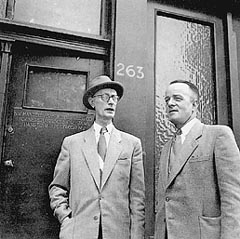
Johannes Kleiman and Victor Kugler
Two of the four main protectors
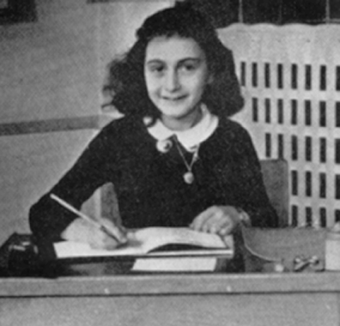
Anne Frank before
moving to the Secret Annex
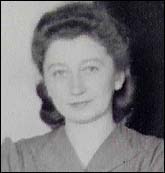
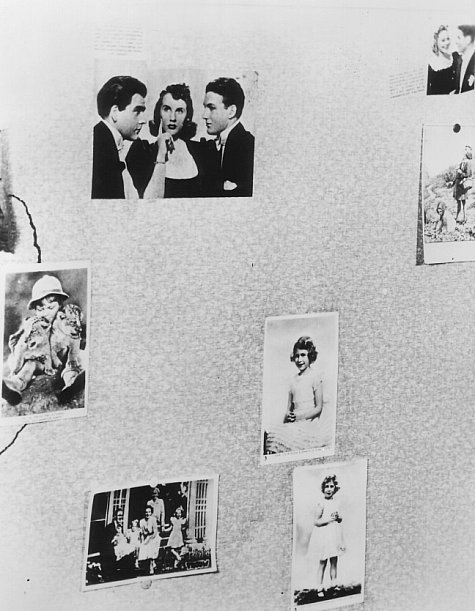
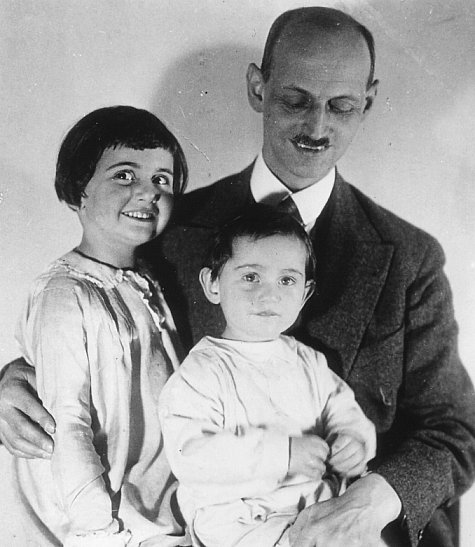

* we respect your privacy. no spam here!